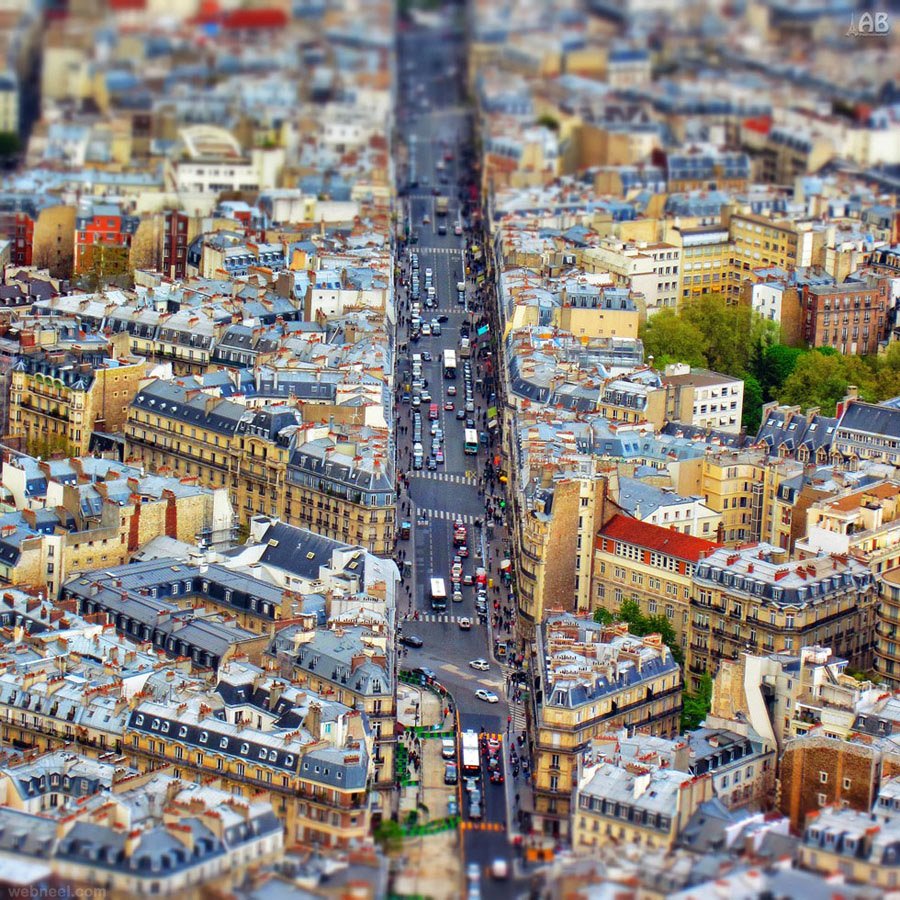

Knowing stuff is always better.Ī tilt-shift lens (its tilting, specifically) allows you to shift the plane of focus so that you can make sharp not “stuff parallel to the sensor” (like the wall in front of you), but “stuff at an angle to the sensor” (like the floor below you).Ĭonsider this, the normal situation. I wrote this because I usually see people with tilt-shift lenses just wildly change every adjustment randomly: and that is not at all a way to guarantee results. But even simplified, this is an advanced article that assumes you already know at least the basics of what tilt-shift lenses do. I am talking about tilting here today, not about shifting. And I will give you a simplified version of their implications here (yes, it’s simplified: no need to start pointing that out).
#Tilt shift focus how to
They tell us how to use tilt-shift lenses (or view cameras) to change the plane of focus. I warn you, it took me a while to get my head around all those formulas. If you like math, look it up on Wikipedia. Hauptmann Scheimpflug is famous for explaining what we know as the Scheimpflug principle. In the early 20th century an Austrian army captain named Scheimpflug worked out how to handle perspective in aerial photographs (this would come in handy in WWI, no doubt). It is incredible what humans will do in order to more efficiently fight other humans. Remember, the smaller the aperture number, the larger the aperture opening.Once again, military technology is at the basis of what we do with technology.

If you want to keep the scale the same, you would just need to use a longer focal length and then use a really large aperture to narrow your depth of field (something that normally wouldn't be possible due to physical constraints in the real world). To achieve this in Blender, you should either scale everything down to model size, shoot with a longer focal length and fairly wide aperture. To fake it, tilt lenses are used to rotate the plane of focus so that only a portion of the scene is in focus (shift is not used for this). In a real world scenario (for example making a city look like a model), you cannot achieve that shallow depth of field using real world lenses. When shooting macro, you end up with a very shallow depth of field. Essentially what you're trying to do with a tilt-shift is to mimic the look of a macro photography setup. You can achieve this look in Blender without having to use a tilt-shift. You can produce a better render by using an actual scene and by caring what the final image looks like. I made this scene in 10 minutes and I don't care that the settings (and thus the effect) aren't perfect. Using the Alpha Over node I lay the blurry render over the basic render, using the blur mask as factor. I take the basic render and apply a Bokeh Blur to it. I take the Z-pass, normalize it (to make it useful), apply a color ramp to mask out the area I want to be in focus (white = in focus, black = blurry)-this creates my "blur mask". (I'm sure there are other ways to get depth information, but I like this way.) I'm using the Z-pass from the render to provide depth information. The tall blue cube should be entirely blurry, like this. This is wrong and not how tilt shift photography actually works. The top and bottom of the tall blue cube are blurry, but the middle is in focus. If you fake the tilt shift, you'll end up with something like this. It overlaps the purple cube in the center and the "A" cube on the middle-right. Make note of the tall blue cube in the foreground. Faking it with a gradient will produce a bad result.


 0 kommentar(er)
0 kommentar(er)
